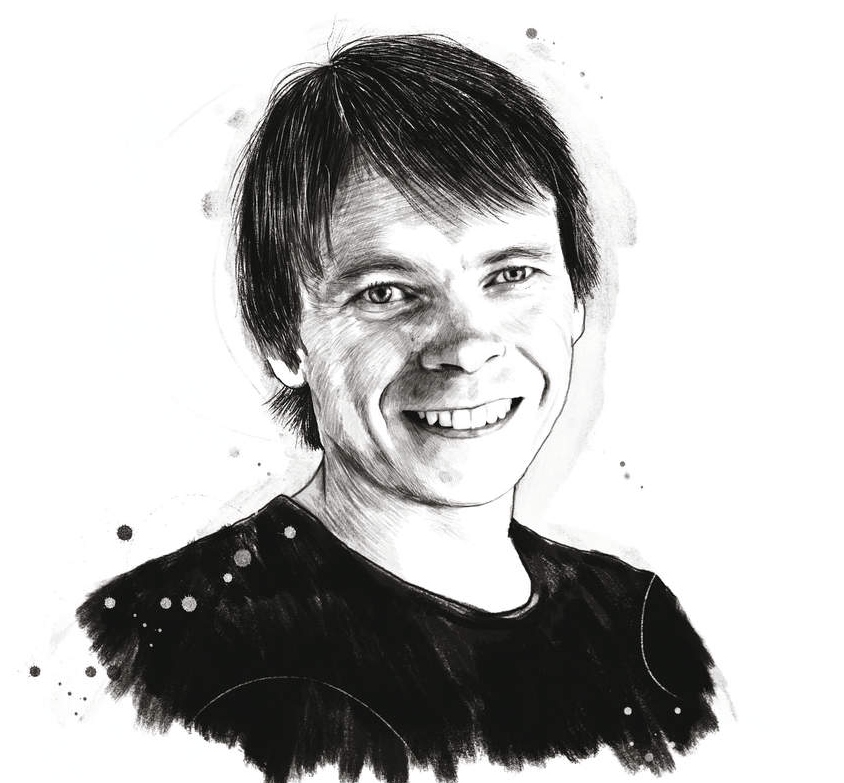I was sitting in a café not long since, sitting in a companionable silence with my friend Bernard. Old hostilities were forgotten, but not to worry, there were new hostilities about to break out. Our drinks arrived. Mine, a flat white. Bernard’s, a pot of tea.

Michael Hutchinson
Michael Hutchinson is a writer, journalist and former professional cyclist. His Dr Hutch columns appears in every issue of Cycling Weekly magazine.
We drank. I pulled a face and complained that my coffee was badly extracted and had an unpleasant hollowness that shone through despite the milk, which had been a little over-heated in the steaming. Also, the latte-art on the top of it was lopsided.
“How’s your tea?” I asked Bernie.
“It’s tea,” he said. “It’s fine. It’s always going to be fine because it’s, you know, tea. Look, I put a bit of milk in, I pour the tea and, hey look, a delicious drink providing me with literally nothing to complain about. And in a few minutes, when I’ve finished my tea, I can pour some more out of the pot and enjoy a second cup that will be even nicer than the first because by that point you’ll have finished your coffee and you’ll be a bit sad.”
I suspect that you can divide cyclists into personality types around coffee. Coffee and cycling are more closely linked than they really have any business being. There are lots of reasons, each less rational than the one before.
Let’s start with cycling / coffee culture. We’re in thrall to the Italians, basically. They are still the stylish nation as far as cycling is concerned. Way back in the 1950s, when road racing started up again in the UK after 50 years of being banned, the new breed of road racers went to espresso bars because they wanted to be Fausto Coppi. Old-fashioned club men went to tea rooms because they wanted to be Albert Derbyshire.
These days, from a culture point of view, a decent coffee might be expensive, but it’s still a cheaper way to offer homage to Italian cycling culture than buying anything made by Campagnolo.
The latest race content, interviews, features, reviews and expert buying guides, direct to your inbox!
Other sports have culturally important drinks. Rugby and beer. Darts and beer. Snooker and beer. Fishing and beer. Bowls and beer. Clearly cycling and alcohol would be problematic, so we need a psychoactive drink that isn’t dangerous.
It’s also a performance enhancer (more so than some of Campag’s recent work), and when you look at the time, hassle and illegality bike riders have put up with over the years to get hold of such things, you can see why we might get excited about finding one at the local garden-centre café.
But there is a deeper reason for the connection. Let’s examine a few of the things that might attract some cyclists to coffee. There is straight-up nerdery – you can easily learn to taste the difference between Ethiopian and Mexican, and there’s an honest pleasure from doing so that is not dissimilar from knowing all the cobbled sections of Paris-Roubaix.
Less nobly, there is the opportunity to demonstrate your expertise though the means of telling other people they are wrong, and the chance to deliberately use language they won’t understand. (Although you need to be careful to whom you express an enthusiasm for a “honeyed Brazilian.”)
Above all, there is stuff. There are machines, there are grinders. Like bicycles, all of these things appear on websites with a £ number beside them that tells you how good they are. You can convince yourself that another £100 / £500 / £5000 is a sensible investment, and you can do this on an eternally rolling basis. If you have too much money, coffee is right up there with cycling as a solution.
I was still contemplating all this when Bernard finished his second cup of tea and my disappointing coffee was a scummy memory.
“Ready?” he said. I nodded. He fished the tea bag out of the pot, gave it a squeeze and stuck it in his pocket. “For later,” he said with a smirk.

